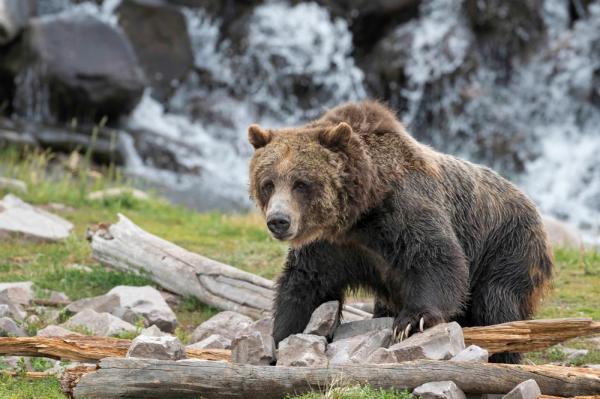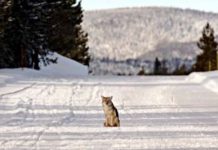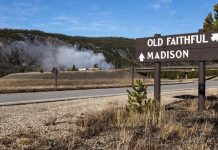
LAKEWOOD, Colo., March 3 (UPI) — The federal government on Thursday announced a proposal to remove the grizzly bear from the list of endangered and threatened species in the Greater Yellowstone Ecosystem.
The U.S. Fish and Wildlife Service cited as a main reason for its proposal the bear’s recovered and now-sustainable population in the 34,000 square mile region, which covers Yellowstone National Park in northwest Wyoming, as well as small portions of southwest Montana and eastern Idaho.
“The restoration of the grizzly bear in Montana, Wyoming and Idaho during the last three decades stands as one of America’s great conservation successes,” theagency said in a news release. “The Yellowstone grizzly bear population has rebounded from as few as 136 bears in 1975 to an estimated 700 or more today.”
The agency also noted that the Yellowstone Ecosystem grizzly, over the last decade,has increased its habitat to include more than 22,000 square miles — which the FWS said is near the ecosystem’s capacity limit for grizzlies.
The bear’s territory in the Yellowstone Ecosystem is now larger than the total areas of New Hampshire, Massachusetts and Rhode Island combined, officials said.
The Fish and Wildlife Service submitted a recovery plan for Yellowstone grizzlies in 1982 and revised it in 1993, 2007 and 2013.
“Our proposal today underscores and celebrates more than 30 years of collaboration with our trusted federal, state and tribal partners to address the unique habitat challenges of grizzlies,” FWS Director Dan Ashe said Thursday.
While the animal’s removal from the list would be a positive sign for grizzlies in Yellowstone, some conservationists responded to Thursday’s proposal by saying the government may be pulling the trigger too soon on stripping the bears’ federal protection.

“The U.S Fish and Wildlife Service’s proposal to remove the Greater Yellowstone Ecosystem grizzly from the Endangered Species List a serious concern,” Stephanie Adams, Yellowstone Program Manager for the National Parks Conservation Association, said Thursday.
“The post-de-listing management of bears must be based on sound science and provide adequate protections to ensure the long-term survival of this iconic population.”
“The grizzlies that live in the Yellowstone ecosystem are incredibly special and unique,” grizzly bear expert David Mattson wrote in the Grizzly Times, in a piece detailing the animal’s unique habitat in Yellowstone.
The FWS said it will soon release an outline of the proposal to the Federal Register for comment, along with two other documents — including a strategy to continue protection efforts after the bear’s removal from the endangered and threatened list.
“Even with this proposed de-listing, the Service remains committed to the conservation of the Yellowstone grizzly bear, and will stay engaged to ensure that this incredible species remains recovered,” Ashe said.
The wildlife agency’s proposal to de-list the Yellowstone grizzly is partly based on an analysis of the animal’s numbers conducted by the U.S. Geological Survey’s Interagency Grizzly Bear Study Team — as well as multiple other factors.
“Determining recovery is based on more than just the number of bears in the ecosystem,” the FWS noted. “It includes the quantity and quality of habitat … and a good balance of male and female bears that are well-distributed throughout the ecosystem.”





